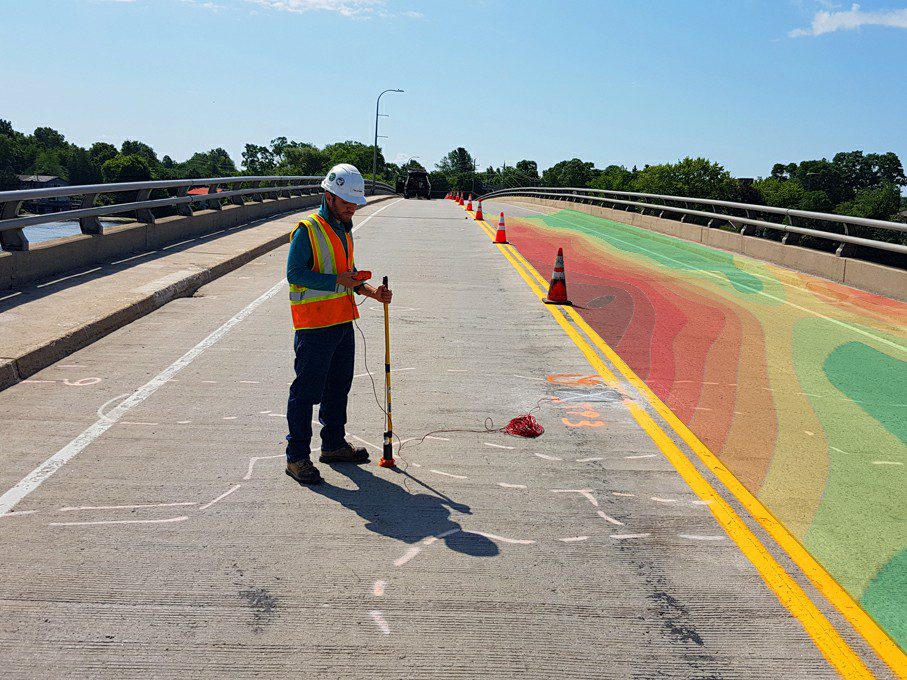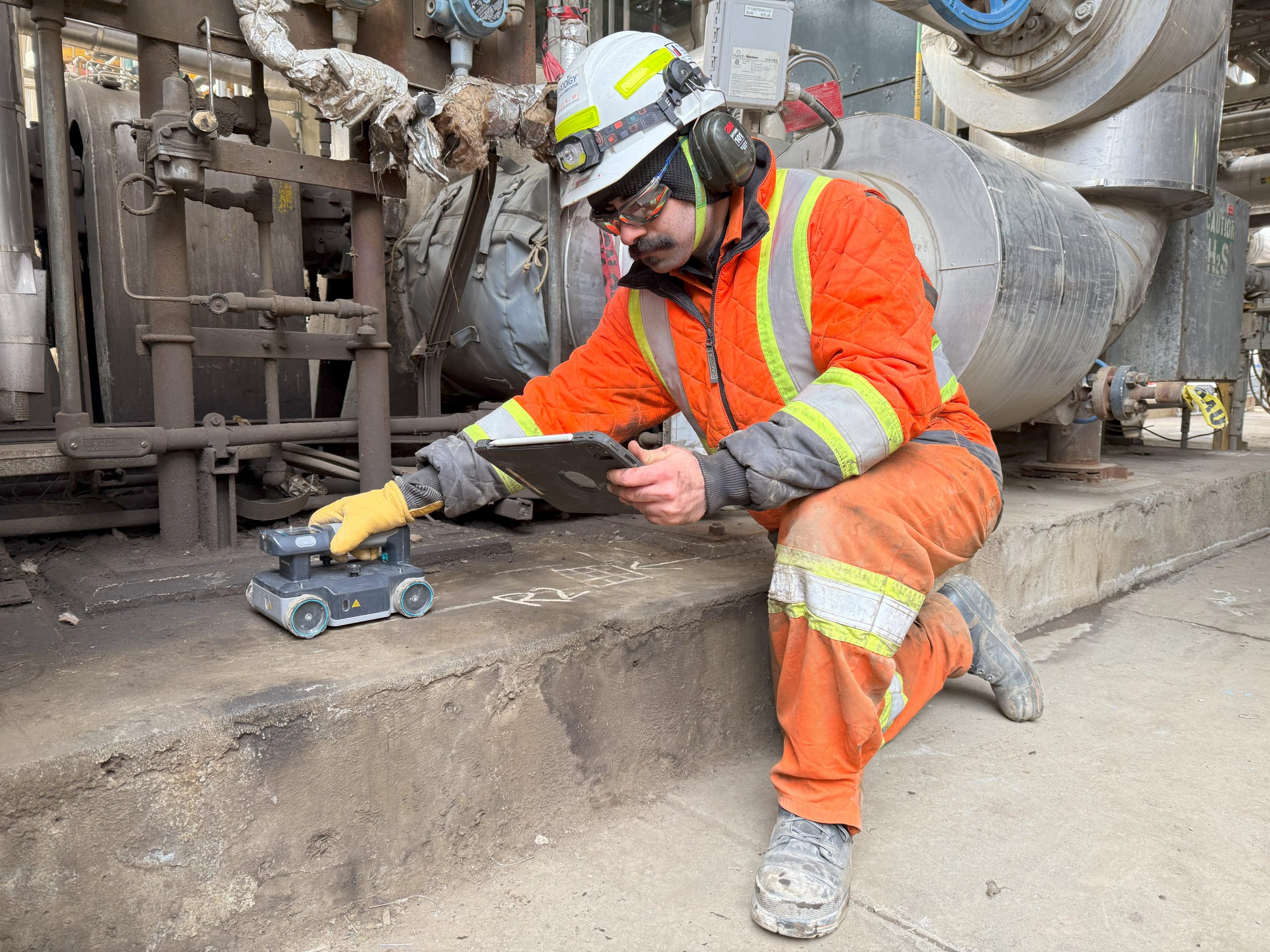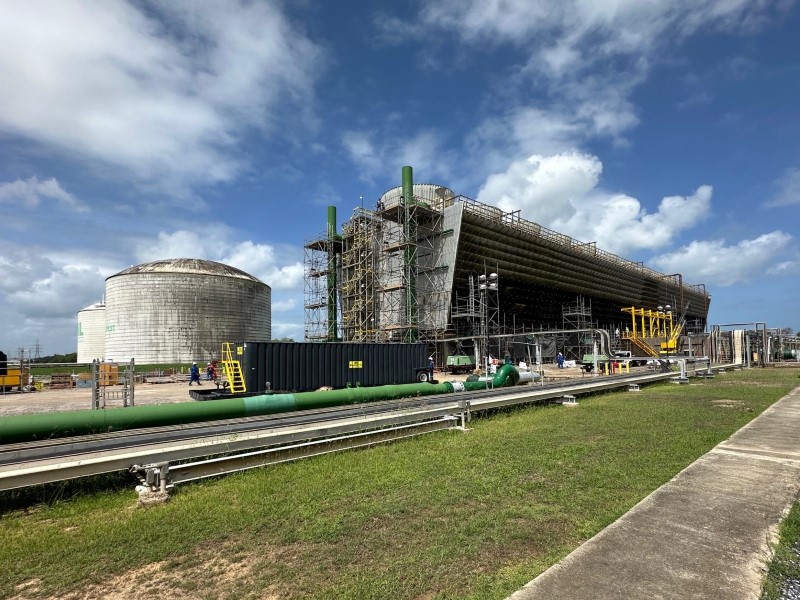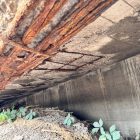Advanced NDT Techniques for Concrete Infrastructure in Oil and Gas, and Mining Sectors
Optimizing durability and asset management in reinforced concrete structures within the oil, gas, and mining sectors is critical for ensuring long-term performance and safety. Corrosion remains one of the most pervasive and damaging deterioration mechanisms, often leading to premature degradation, costly repairs, and compromised structural integrity. Despite its significance, the application of advanced non-destructive testing (NDT) techniques for assessing concrete durability and managing corrosion risks is frequently overlooked or inconsistently implemented. This oversight leaves vital infrastructure vulnerable to hidden deterioration and unexpected failures. This article highlights how integrating advanced NDT methods with service life modeling can provide critical insights into in-situ material conditions, enabling proactive maintenance strategies that extend asset lifespan and improve resilience in demanding industrial environments.

Understanding the Problem
Corrosion in reinforced concrete has been extensively investigated in the transportation infrastructure sector. Numerous standards and guidelines have been developed to support the inspection and testing of bridge decks for corrosion-related deficiencies. For instance, the SHRP (TRB, 2013) report provides a comprehensive overview of available testing methods for assessing the condition of bridge decks. However, despite the well-documented threat corrosion poses to long-term durability, its management in sectors such as mining and oil and gas often receives less attention. The author has identified several key factors contributing to this oversight, including institutional, technical, and practical limitations.
- A significant contributor to this oversight is the persistent knowledge and perception gap regarding concrete corrosion. In industrial sectors such as oil and gas and mining, corrosion is typically associated with metallic assets—pipelines, storage tanks, and pressure vessels—that are directly linked to production, safety, and revenue. Consequently, these assets are typically included in robust asset integrity programs, supported by well-established inspection protocols and industry standards. In contrast, reinforced concrete is often perceived as inherently durable and maintenance-free, leading to the misconception that it requires minimal monitoring. This perception neglects the susceptibility of embedded steel reinforcement to corrosion, resulting in a systematic underestimation of the risks. These risks can compromise structural safety, increase maintenance costs, and reduce the service life of critical assets.
- Another major barrier is the absence of standardized and widely adopted protocols for the assessment and corrosion risk evaluation of concrete infrastructure. Unlike the transportation sector, where routine visual inspections and condition surveys are common practice, concrete assets in the mining and oil and gas sectors are rarely subjected to systematic evaluation. These structures are seldom assessed beyond surface-level indicators, and deterioration—often concealed within the reinforcement—progresses silently until visible signs like cracking, delamination, or spalling occur. As a result, early detection becomes extremely challenging, leading to reactive rather than proactive maintenance approaches and undermining long-term durability.
- Industrial concrete structures are often exposed to highly aggressive environmental conditions that accelerate deterioration. These include sulfate-rich soils, chloride-laden marine spray, and acidic process effluents, all of which compromise the concrete’s protective properties and increase the risk of reinforcement corrosion. The close integration of concrete with adjacent steel components can create complex, multi-mechanism corrosion environments—including chloride-induced corrosion, acid attack, and incipient anode formation driven by electrochemical incompatibility between materials. Additionally, operational conditions often evolve, exposing structures to stressors beyond their original design, such as saline water leaks, cyclic loading, or thermal fatigue. These realities reinforce the importance of proactive inspection strategies and predictive modeling to safeguard long-term asset performance.
NDT Methods in Support of Asset Integrity Management
Advanced non-destructive testing and evaluation (NDT-E) techniques have emerged as valuable tools for assessing concrete condition throughout a structure’s lifecycle. These methods allow engineers to detect subsurface defects, measure in-situ material properties, and evaluate structural integrity without damaging the asset. Beyond diagnostics, NDT-E results—such as chloride content, surface resistivity, and corrosion probability—can be used in service life modeling and structural performance simulations to assess reliability and estimate remaining life under varying exposure scenarios. This section highlights the advantages of implementing NDT-E in asset integrity management programs for concrete infrastructure. While many of these methods are adaptable to most asset programs, they are categorized here based on their relevance to different phases of service life.
Early-Stage Durability Screening and Corrosion Risk Assessment
Half-Cell Corrosion Potential (HCP) is an effective NDT-E technique for the rapid screening of concrete elements to determine the probability of active corrosion in embedded reinforcement. Standardized under ASTM C876, this method provides early indications of corrosion activity, enabling asset owners and consultants to implement focused monitoring and preventive actions. Repeated HCP measurements over time can offer valuable insight into deterioration rates and trends.

Surface Electrical Resistivity (SER) is another non-invasive technique that assesses concrete’s resistance to ionic transport. This test supports estimates of chloride diffusion potential, particularly in new or early-age concrete, aiding in service life prediction and identifying zones vulnerable to future corrosion.
General Condition Assessment and Exposure Analysis
Ground Penetrating Radar (GPR) offers fast, cost-effective scanning for reinforcement layout, concrete cover, and subsurface anomalies. GPR is ideal for large-scale surveys and can reveal low cover depths, moisture ingress, and potential chloride ingress pathways—key exposure parameters for corrosion risk modeling. Its speed and scalability make it a core technique for routine integrity assessments.

Corrosion Rate Measurement complements HCP by quantifying the actual rate of reinforcement section loss. While HCP indicates the likelihood of corrosion, corrosion rate measurement informs the urgency and scope of required intervention, aiding engineers in repair and rehabilitation planning.
Damage Detection and Quantification in Deteriorated Structures
In many industrial applications, owners do not address concrete integrity until deterioration is visibly advanced. At this stage, precise damage detection and quantification become crucial for assessing reliability and determining the location, extent, and severity of damage. Useful techniques include:
Impact-Echo and Ultrasonic Pulse Echo (UPE) are effective in identifying internal defects such as voids, cracking, and delamination. These methods augment basic screening tools like hammer sounding and chain dragging, and are indispensable for detailed evaluations in structurally critical areas. They also assist in quantifying damage to inform repair design.
Integrating NDT Data with Service Life Prediction and AI-Based Maintenance Planning
The true value of NDT lies not only in detecting damage but in enabling performance-based maintenance decisions. When NDT-E results are integrated into service life prediction models, they offer a reliable framework for forecasting degradation, estimating time-to-failure, and prioritizing timely intervention—particularly vital in mining environments where access is restricted and downtime is costly.
Traditional service life models often rely on assumed values for input parameters such as permeability, chloride diffusion coefficients, or cover depth, which can vary widely in actual conditions. By incorporating field data from SER, HCP, and corrosion rate measurements, asset managers can create more accurate, site-specific deterioration profiles. These models help calibrate the timing of corrosion initiation and propagation and simulate asset performance under diverse environmental scenarios typical of industrial sites.
Recent developments in artificial intelligence (AI) and machine learning (ML) offer new avenues for optimizing maintenance planning. By training AI models on historical performance data and ongoing NDT inputs, engineers can identify patterns, predict vulnerable zones, and recommend interventions before failure thresholds are reached. Supervised learning algorithms can, for instance, correlate corrosion trends with environmental variables to flag high-risk areas. Unsupervised clustering methods can group assets with similar deterioration trajectories, allowing for targeted but standardized rehabilitation strategies.
In mining and industrial infrastructure—where concrete components like retaining walls, basins, and silos face aggressive, changing conditions—this integrated approach marks a shift from reactive maintenance to predictive, risk-based management. It also enhances capital planning by quantifying the cost-benefit of preventive versus deferred repairs, thus improving resilience and operational efficiency.
Case Study 1: Concrete Dolphins in Offshore Oil and Gas Terminal
Two reinforced concrete marine dolphins were evaluated as part of a condition assessment of aging infrastructure in tidal and splash zones. While top surfaces showed no significant visual deterioration, NDT-E techniques revealed underlying corrosion activity. HCP mapping and chloride profiling indicated corrosion initiation along the lower edges subjected to repeated wetting and drying. SER measurements confirmed localized areas of low durability. Service life modeling predicted advanced corrosion propagation within six years. These findings supported a proactive maintenance and rehabilitation strategy.
Case Study 2: Cooling Tower Basin in Nitrogen Plant
A reinforced concrete cooling tower basin at a petrochemical facility was evaluated using an integrated suite of NDT-E techniques to diagnose deterioration and inform long-term maintenance. Key methods included ultrasonic pulse velocity (UPV) for assessing material integrity, GPR for mapping reinforcement and locating delamination, and HCP for detecting active corrosion zones. Additional tests included core sampling for chloride profiling, SER, and compressive strength evaluation. The combined data revealed high-permeability zones, poor concrete quality, and elevated chloride concentrations. These results were incorporated into calibrated service life models to refine corrosion initiation and propagation timelines. A targeted, risk-informed repair strategy was developed, showcasing how NDT-E and predictive modeling can improve asset durability in harsh environments.

Conclusions
Advanced NDT-E techniques offer critical insights into corrosion condition assessment for concrete infrastructure. Methods such as GPR, UPE, impact-echo, SER, and HCP enable non-invasive evaluation of material quality, defect severity, and durability potential. When these techniques are paired with service life modeling tools, they empower asset managers to anticipate degradation, improve decision-making, and implement maintenance strategies that reduce failure risk and lifecycle costs. As demonstrated in the case studies, integrating NDT-E with predictive modeling enhances maintenance planning, extends service life, and improves the resilience of industrial concrete assets. Broader adoption of these practices will be key to ensuring sustainable infrastructure management in aggressive service environments.



